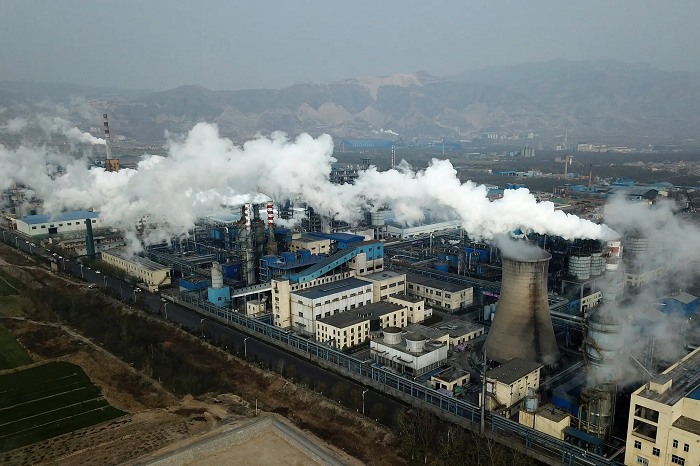
When Beijing announced plans to enter the international carbon markets this October, the message was unmistakable: China no longer intends to simply follow global climate rules, it aims to write them. The move, revealed in the ‘Progress Report of China’s National Carbon Market (2025)’ by the Ministry of Ecology and Environment (MEE), signals a new chapter in both China’s domestic environmental policy and global climate strategy. The report states that China will “promote fulfillment of international carbon reduction commitments through cross-border carbon trading,” positioning the country not just as a manufacturing giant but as an emerging powerhouse in green finance and climate governance. This shift, while technical in language, reflects something far more ambitious, a recalibration of China’s economic engine for a carbon-constrained world.
Laying the domestic foundation
Before stepping onto the global carbon stage, China spent the past three years building a sturdy domestic foundation. Since 2024, the government has increased the construction of a multi-layered legal and institutional framework to ensure the carbon market’s credibility and continuity.
Two policy documents: ‘Opinions on Advancing Green and Low-Carbon Transition and Strengthening the Construction of the National Carbon Market’ and the ‘Interim Regulations for the Management of Carbon Emission Trading’ laid down the rules of engagement. They codified everything from data verification and emission caps to penalties for fraud and data falsification, addressing one of the main concerns voiced by international observers: transparency.
“China’s focus on data integrity and compliance demonstrates that this is not just a political statement but a serious economic restructuring,” says Li Zheng, Executive Vice President at the Institute of Climate Change and Sustainable Development, Tsinghua University. “It’s about building market credibility at home before competing abroad.”
Broadening the market
The expansion of the National Carbon Emission Trading System (ETS) marks the most dramatic development since its inception. Approved by the State Council, the inclusion of steel, cement, and aluminum smelting brings more than 1,300 new entities into the fold raising the total to nearly 3,500.
With this, China’s ETS coverage has rose:
• Regulated emissions: up from 5 billion tonnes to 8 billion tonnes of CO₂ equivalent
• Emission types: now include CF₄ and C₂F₆, potent industrial greenhouse gases
• National coverage: from 40 per cent to over 60 per cent of total emissions
The expansion, to be implemented in phases through 2026, maintains an intensity-based approach, allowing enterprises to grow while improving their carbon efficiency. This contrasts with the absolute cap model dominant in the EU, reflecting Beijing’s attempt to balance growth and green transition. “China’s approach is pragmatic,” notes energy economist Zhao Mei of the Chinese Academy of Social Sciences. “It recognizes industrial realities while pushing firms to innovate, not stagnate.”
A market gaining momentum
What began as a cautious experiment in 2021 has now evolved into one of the world’s most active carbon markets. By 2024, the national carbon market reached a record annual transaction value of 18.11 billion yuan, and as of August 2025, cumulative transactions had climbed to 47.83 billion yuan. Prices for China Carbon Emission Allowances (CEAs) breached the symbolic 100 yuan/tonne mark for the first time in April 2024, an indication of tightening demand and investor confidence.
Table: China market's performance
M
|
Metric |
2024 |
|
Annual cumulative trading volume |
189 million tonnes |
|
Annual transaction value |
18.11 billion yuan |
|
Year-end composite closing price |
97.49 yuan/tonne |
|
Number of participating entities |
1,471 |
|
2023 compliance rate |
99.98% |
The near-perfect compliance rate is impressive observers, particularly given the system’s size and diversity. Analysts credit this success to digital monitoring systems and blockchain-backed verification tools introduced under the new regulations.
The rise of the voluntary carbon market
Parallel to the ETS, China launched its National Voluntary Greenhouse Gas Emission Reduction Trading Market in January 2024, signaling a whole-of-society approach to decarbonization. This platform allows companies, investors, and even local governments to offset emissions by funding certified green projects.
Among its early success stories is the Dongtai Offshore Wind Project by China Energy Investment Corporation in Jiangsu. The project, approved for 857,000 tonnes of CO₂-equivalent credits, has generated nearly 70 million yuan in trading revenue, translating to an extra 0.039 yuan per kilowatt-hour of electricity produced. By August 2025, the voluntary market recorded:
Cumulative trading volume: 2.71 million tonnes
• Turnover: 229 million yuan
• Active projects: 106 (spanning wind, solar, and afforestation)
“This market is more than symbolic,” explains Xu Han, Director of Green Finance at the Shanghai Environment and Energy Exchange. “It’s about turning ecological value into financial capital, a pathway for innovation and job creation.”
Global ambitions of cross-border carbon trading
China’s entry into international carbon markets marks a geopolitical inflection point. The MEE’s report confirms that Beijing is actively formulating administrative measures for cross-border carbon trading, a move that could redefine the architecture of global carbon governance.
This effort aligns with President Xi Jinping’s vision of a “community with a shared future for mankind,” extending China’s domestic carbon successes into an instrument of international cooperation. Beijing aims not only to meet its own 2060 carbon neutrality target but also to help developing nations achieve their decarbonization goals through technology and market access.
Already, China is exploring bilateral carbon trading frameworks with ASEAN countries, Africa, and the Middle East regions with abundant renewable potential but limited carbon finance infrastructure. “China’s entry into global carbon markets could create a counterweight to the EU’s Carbon Border Adjustment Mechanism (CBAM),” says Jonathan Watts, Asia Climate Editor at The Guardian. “It’s about influence economic, environmental, and geopolitical.”
Yet the path forward isn’t without hurdles. Questions remain about the comparability of China’s carbon credits with international standards like those under the EU ETS or the Article 6 mechanisms of the Paris Agreement. Market analysts caution that without harmonized verification and transparency standards, integration may remain limited.
Also, industries under pressure particularly heavy manufacturing face rising costs as compliance tightens. Still, many experts see opportunity in adversity. “The carbon market is forcing Chinese industries to digitize, optimize, and innovate faster than ever,” says Li Zheng. “It’s a new competitiveness metric for the 21st century.”
Carbon as currency
For China, carbon trading has evolved beyond environmental policy it is now an economic instrument, a diplomatic lever, and a signal of its ambitions in the global sustainability economy. By increasing its carbon markets, strengthening data integrity, and embracing international cooperation, Beijing is crafting a vision of climate capitalism with Chinese characteristics. Whether the world follows its lead remains to be seen but one thing is clear: China is no longer content to be a participant in global climate governance. It is positioning itself to be its architect.











